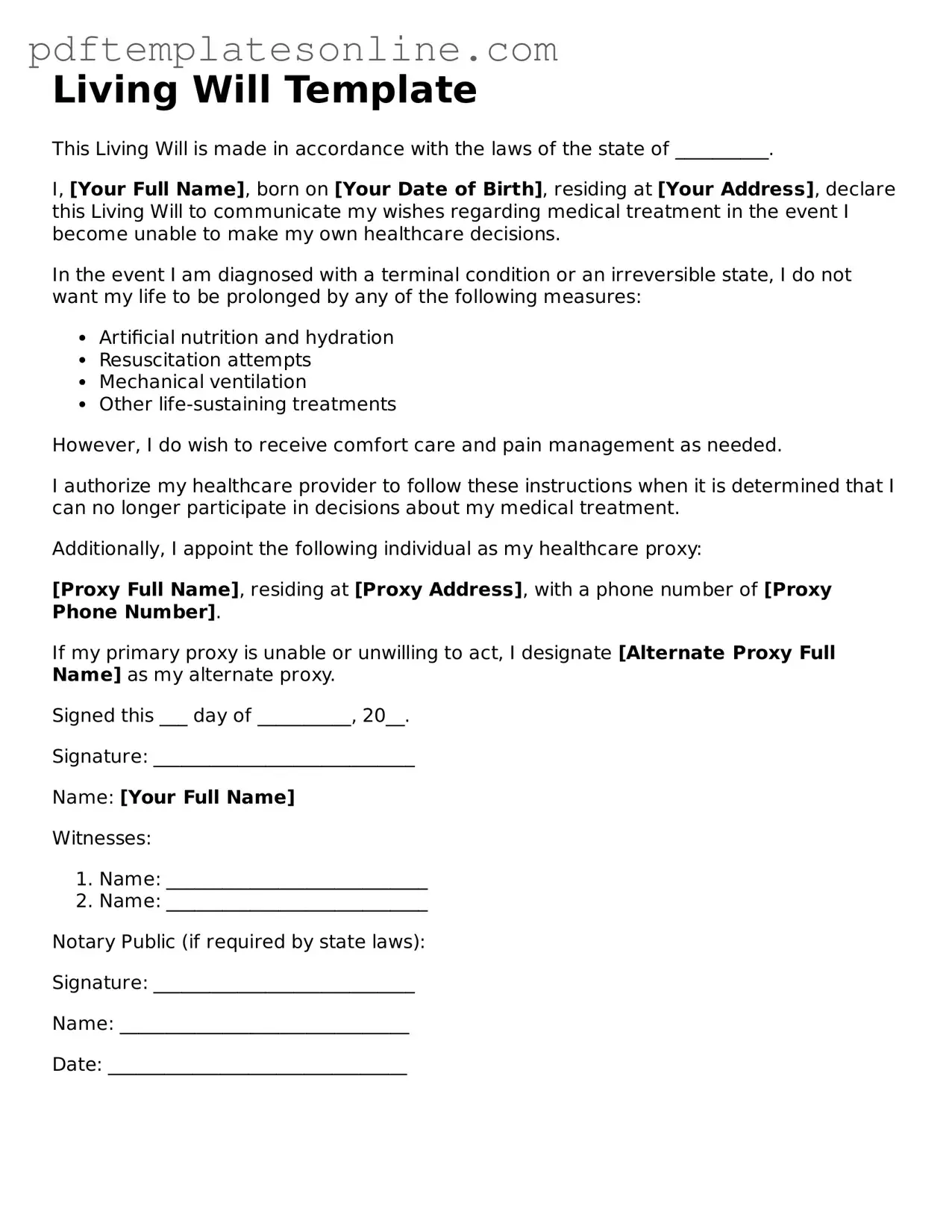Creating a Living Will is an important step in planning for your future healthcare decisions. However, many people make mistakes when filling out this form, which can lead to confusion or even unwanted medical interventions. One common mistake is not being specific about your wishes. It’s essential to clearly outline your preferences regarding medical treatments, such as life support or resuscitation. Vague statements can leave room for interpretation, which may not align with your true desires.
Another frequent error is failing to update the Living Will as circumstances change. Life is unpredictable, and your views on medical treatment may evolve over time. It’s crucial to review and revise your Living Will periodically, especially after significant life events like marriage, divorce, or the diagnosis of a serious illness. Keeping your document current ensures that it accurately reflects your current wishes.
Many individuals also overlook the importance of discussing their Living Will with family members and healthcare providers. This conversation is vital. It helps ensure that your loved ones understand your preferences and can advocate for you if necessary. Without this dialogue, your family may struggle to make decisions on your behalf, leading to stress and conflict during difficult times.
Additionally, some people forget to sign and date the document properly. A Living Will is not legally binding unless it has been signed by you and, in some cases, witnessed or notarized. Double-checking these details can save you from potential legal challenges later on.
Another mistake involves not considering state-specific laws. Each state has its own regulations regarding Living Wills. It’s important to familiarize yourself with your state’s requirements to ensure that your document is valid and enforceable. Ignoring these laws can render your Living Will ineffective when it’s needed most.
Lastly, many individuals fail to keep copies of their Living Will in accessible places. After completing the document, it should be shared with key people, such as family members and your primary care physician. Keeping copies in easily accessible locations ensures that your wishes can be honored without delay when the time comes.
